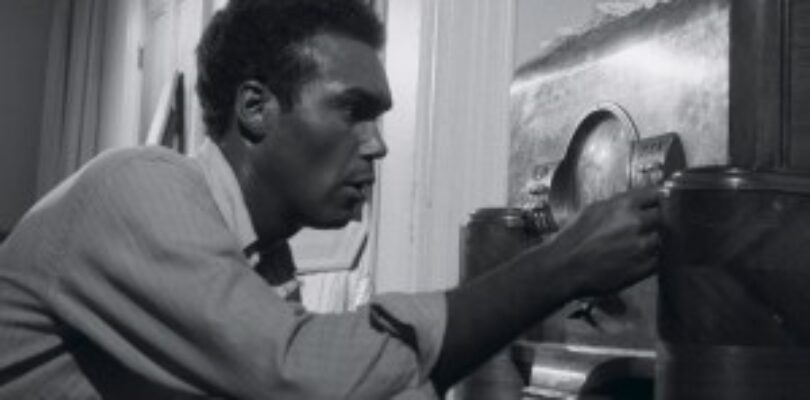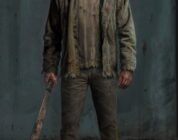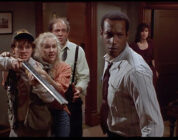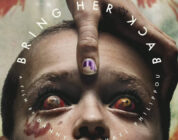It might seem difficult to believe, but there was a time – not very long ago, in fact – when zombies weren’t the cultural icons they are today. Horror fans have loved the undead since Hollywood first introduced them in the 1930s, but it wasn’t until the 1960s that critics and wider audiences began to take them seriously. That change, of course, was due entirely to the work of independent filmmaker George A. Romero, who – along with a handful of first-time actors and a crew of Pittsburgh locals – revolutionized the genre in 1968 with “Night of the Living Dead.”
Mainstream popularity stayed just out of reach until 2002, when the modestly budgeted “28 Days Later” and the glossy video game adaptation “Resident Evil” premiered within a few months of each other, setting off a wave of interest that became a global tsunami with the arrival of AMC’s “The Walking Dead” in 2010. From that moment on, zombies have remained ubiquitous pop culture favorites.
The definition of what constitutes a zombie is hotly contested among fans, however. Many hold firm to Romero’s established rules, while others take a broader approach by defining virally infected humans as zombies. Perhaps that’s because zombies represent different things to different people. To some, they’re a powerful symbol of mindless conformity. To others, they represent the fear of death or mass contagion. And plenty of people simply find them funny in a blackly comic sort of way.
Regardless of your personal definition, zombies will continue shambling their way into theaters as long as audiences have a taste for terror. Here is Variety‘s guide to the best zombie movies of all time.
-
Night of the Living Dead (1968)
Image Credit: Everett Collection / Everett Collection George A. Romero’s landmark classic rewrote the book on cinematic zombies, and it continues to influence and inspire legions of new moviemakers to this day. Shot with the raw intensity of a documentary, “Night of the Living Dead” effortlessly blends nail-biting horror, thoughtful social commentary, and a powerful political subtext to brilliant effect. Duane Jones, the film’s unforgettable star, remains one of the most charismatic leading men in horror history, and his resourceful character set the standard for all future zombie fighters.
-
Dawn of the Dead (1978)
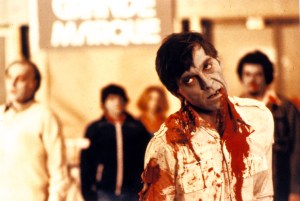
Image Credit: Courtesy Everett Collection The blood-soaked tale of four survivors who find temporary shelter in a massive shopping mall while hungry corpses roam the earth, Romero’s blistering follow-up to his 1968 masterpiece adds a dose of pitch black humor to the zombie genre, and the result is a bona fide cult classic. The shocking special effects by make-up wizard Tom Savini set viewers’ stomachs churning when the film was first released, but today it’s the somber, melancholy moments – like actors Gaylen Ross and David Emge sitting motionless in bed together, each staring hopelessly into space – that land the hardest.
-
Shaun of the Dead (2004)
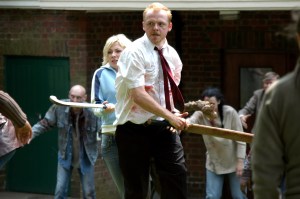
Image Credit: Rogue Pictures/Everett Collection
When a genre’s popularity wanes, spoofs and satires inevitably appear like vultures overhead, signaling that death is imminent. But director Edgar Wright’s hilarious and heartfelt zom-com about two loveable slackers fighting to save their friends and family from an undead apocalypse not only celebrated the zombie genre, it reinvigorated it. Co-written by Wright and lead actor Simon Pegg, the movie’s clever script is chock full of knowing references to George Romero’s frightening filmography, and the performances across the board are superb. Not since Mel Brooks’ immortal “Young Frankenstein” has a horror comedy hit its mark this successfully. -
Re-Animator (1985)
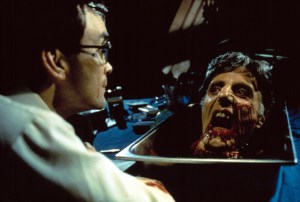
Image Credit: ©Empire Pictures/Courtesy Everett Collection No filmmaker has done more to honor the fevered imagination of H.P. Lovecraft than the late Stuart Gordon, and his wildly energetic adaptation of the author’s 1921 short story “Herbert West–Reanimator” is his masterwork. Playing a depraved medical student whose twisted experiments have a nasty habit of creating superhuman zombies, Jeffrey Combs’ character joins Dr. Frankenstein, Dr. Jekyll, and Dr. Moreau in the pantheon of all-time best mad scientists. “Re-Animator” was so popular, it spawned two sequels, several comic books, and an award-winning musical theater adaptation that frequently drenched patrons in the first three rows with fake blood.
-
I Walked with a Zombie (1943)
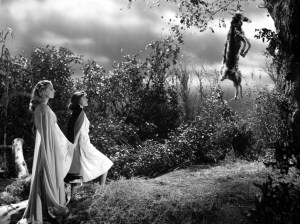
Image Credit: Courtesy Everett Collection Director Jacques Tourneur and producer Val Lewton collaborated on several acclaimed horror movies for RKO Pictures in the 1940s, including this eerie gothic romance about an innocent nurse who’s drawn into the dark world of the occult while caring for a comatose patient on a Caribbean sugar plantation. Loosely based by Charlotte Brontë’s novel “Jane Eyre,” the film’s dreamlike atmosphere and noir-inspired visuals are indeed memorable, but it’s towering actor Darby Jones as the mute zombie henchman of the villainous voodoo priest who steals the show. His looming shadow and bulbous eyes continue to generate potent chills more than 80 years later.
-
Dawn of the Dead (2004)
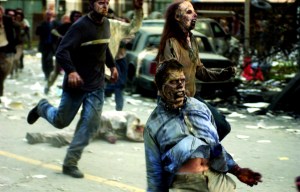
Image Credit: ©Universal/Courtesy Everett Collection Horror fans were understandably wary when music video director Zack Snyder was tapped to helm the remake of Romero’s “Dawn of the Dead” as his debut feature. Their fears turned to cheers, however, when the movie hit screens with the force of a sledgehammer smashing through a zombie’s skull. Ferociously bloody and paced like a rocket, Snyder’s version once again traps a group of desperate survivors in a shopping mall overrun by flesh-chomping ghouls, but it updates the original in a number of witty ways, making it arguably the best modern remake of its kind. 17 years later, Snyder returned to the zombie genre with the unrelated “Army of the Dead,” but the result was far less interesting.
-
The Return of the Living Dead (1985)
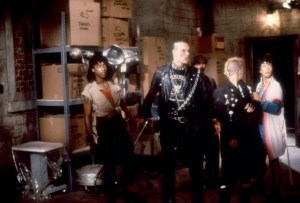
Image Credit: ©Orion Pictures Corp/Courtesy Everett Collection
When a strange toxic gas is accidentally released in the basement of a medical supply building in Kentucky, a group of nihilistic punks, a jittery mortician, and a few dopey warehouse workers find themselves battling hundreds of zombies in director Dan O’Bannon’s deliciously gruesome horror comedy. Propelled by a killer soundtrack of hits from bands like The Flesh Eaters, The Cramps, 45 Grave, and The Damned, this eminently quotable zombie pic introduced the world to the idea that zombies’ favorite food is “brains!” The film’s young cast is uniformly excellent, but it’s veteran character actors Clu Gulager, James Karen and Don Calfa who truly shine on screen. -
Zombie (1979)
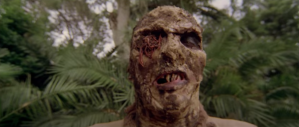
Conceived as an unofficial sequel to Romero’s “Dawn of the Dead,” this impressively revolting zombie pic has an identity all its own thanks to the skilled direction of Italian gore master Lucio Fulci. Containing the single greatest eye-impalement in cinema history, “Zombie” benefits immeasurably from Sergio Salvati’s widescreen camerawork, Giannetto De Rossi’s graphic make-up effects, and Fabio Frizzi’s throbbing score. The Caribbean island setting provides a lush voodoo vibe, and star Tisa Farrow (Mia’s sister) is a welcome presence playing a plucky heroine whose search for her missing father leads to a close encounter with the undead. -
Day of the Dead (1985)
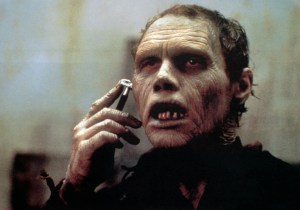
Image Credit: ©United Film Distribution/Courtesy Everett Collection Romero’s third zombie film is by far the bleakest and bloodiest entry in his series, and it was initially received rather coolly by many horror fans who were put off by its claustrophobic setting and deliberately measured pace. But over time, this uncompromising portrait of humanity on the brink of extinction found its audience, and today it’s rightfully seen as a milestone in the genre. Taking place largely in an underground bunker, the film finds a team of scientists clashing with the armed soldiers assigned to protect them. While the humans foolishly bicker and fight with one another, a prune-faced zombie named Bub (brilliantly portrayed by Sherman Howard) emerges as the most sympathetic character in the movie.
-
28 Days Later (2002)
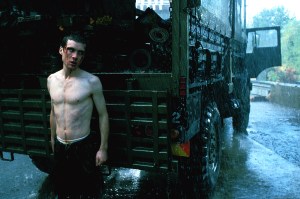
Image Credit: ©20thCentFox/Courtesy Everett Collection While purists who insist that only walking corpses qualify as zombies will no doubt take issue with including “28 Days Later” on this list, the fact is that Danny Boyle’s visionary film about a fast-spreading virus that transforms people into mindless killers did more to revive the moribund zombie genre than any movie since the original “Night of the Living Dead.” Furthermore, once exposed to the highly contagious rage virus, the infected victims function almost identically to the zombies depicted in the “Re-Animator” series, Peter Jackson’s “Dead Alive,” and a dozen other movie
-
Dead & Buried (1981)
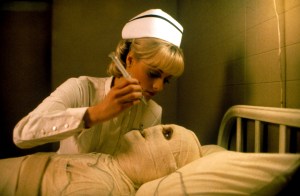
Image Credit: Courtesy Everett Collection Co-written by Dan O’Bannon, who penned the screenplay for the original “Alien” and directed the aforementioned “The Return of the Living Dead,” “Dead & Buried” takes place in the sleepy coastal village of Potters Bluff, where the local residents spend their free time fishing, gossiping, and slaughtering tourists. As if that isn’t strange enough, the dead visitors don’t stay dead for long. James Farentino is dependably solid as a small town sheriff in over his head, but Jack Albertson of “Chico and the Man” fame knocks it out of the park playing a folksy mortician whose business is booming what with the non-stop murders and all. Richly atmospheric and loaded with surprises, “Dead & Buried” is a sinister treat that’s well worth seeking out.
-
Train to Busan (2016)
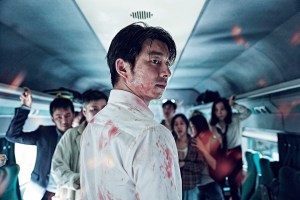
Image Credit: Courtesy Everett Collection
A father and his young daughter are trapped with an assortment of bewildered commuters on a speeding train during a zombie outbreak in this gripping, gory, and unexpectedly emotional horror film from South Korea. Like a mashup between the 1976 virus-on-a-train thriller “The Cassandra Crossing” and the dystopian sci-fi epic “Snowpiercer,” this exhilarating zombie pic uses the structure of a classic disaster movie to weave multiple characters and storylines together in a terrifying tapestry. Packed with astonishing set-pieces, jaw-dropping violence, and genuinely lovable performances from the entire cast, “Train to Busan” builds to a climax that’s guaranteed to make you cry. -
REC (2007)
![REC, (aka [REC]), Manuela Velasco, 2007. ©Filmax/Courtesy Everett Collection](https://zombiegaming.org/wp-content/uploads/2023/03/REC.jpg)
Image Credit: Filmax/Courtesy Everett Collection Like the handful of other viral outbreak movies on this list, the Spanish horror hit “REC” doesn’t exactly follow the rules established by George Romero, but it incorporates enough of them to warrant inclusion here. Plus, it’s just plain scary as hell! Blending found-footage, demonic possession, and zombie-style contagion in a creepy cocktail, “REC” tells the nightmarish tale of a TV reporter and her faithful cameraman who follow a crew of firefighters and police officers into a labyrinthine apartment building in Barcelona. Once inside, the film becomes the cinematic equivalent of a walkthrough haunted house attraction, with one expertly timed jump scare after another assaulting the audience, until they’re left wrung out and shaking.
-
Zombieland (2009)
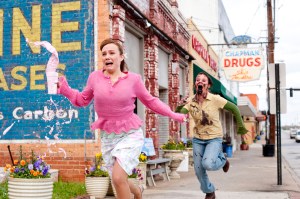
Image Credit: ©Columbia Pictures/Courtesy Everett Collection 2009 was a banner year for the undead, with well over 20 zombie films released in quick succession, including noteworthy titles like “REC 2,” “Dead Snow,” and George Romero’s swan song “Survival of the Dead.” But it was director Ruben Fleischer’s debut feature “Zombieland” that captured all the attention, and for very good reason. Although the plot isn’t particularly original, the film’s whip-smart script, dynamic visuals, jubilant performances, and celebrity stunt-casting made “Zombieland” one of the most entertaining studio movies of the decade.
-
White Zombie (1932)
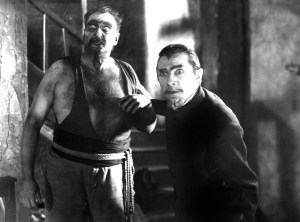
Image Credit: Everett Collection / Everett Collection One year after shocking moviegoers with his iconic portrayal of Count Dracula, Bela Lugosi headlined the very first zombie movie in history, playing a diabolical witch doctor named Murder Legendre in the influential classic “White Zombie.” Shot in a mere 11 days, and utilizing leftover props, costumes, and sets from other horror films of the period, “White Zombie” wasn’t a hit upon first release, but it gradually built momentum over time and became a sizable box office success. Lugosi, of course, is never less than mesmerizing in the lead role, whether he’s raising the dead or commanding his army of zombies to commit murder. No wonder heavy metal superstar Rob Zombie named his first band after this ghoulish pre-Code potboiler.
-
28 Weeks Later (2007)
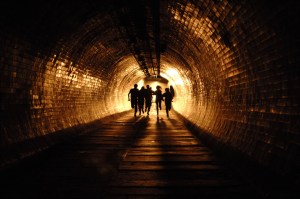
Image Credit: ©Fox Searchlight/Courtesy Everett Collection Spanish filmmaker Juan Carlos Fresnadillo took the directorial reins on this riveting sequel to Danny Boyle’s “28 Days Later,” and he dialed the action and suspense up to near-unbearable levels at times. While the original film was an intimate, thoughtful, and quite moving look at the apocalypse, Fresnadillo’s frenzied follow-up becomes a three ring circus of unrelenting horror once the story kicks into high gear. The scares are more visceral, the gore is more plentiful, and the overall mood is far grimmer than the previous movie. In short, no character on screen, no matter how likeable or altruistic they might be, is safe from a brutal death this time around.
-
Warm Bodies (2013)
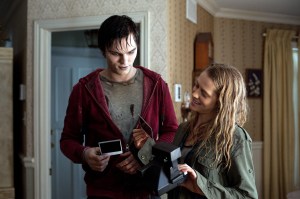
Image Credit: Summit Entertainment/courtesy Everett Collection During the 1980s, zombie romantic comedies became an unlikely trend, with films like “Zombie High,” “I Was a Teenage Zombie” and “My Boyfriend’s Back” mixing genres like a mad scientist combining chemicals in a lab. But the formula wasn’t perfected until director Jonathan Levine’s charming zom-com “Warm Bodies” arrived in theaters like a refreshing breath of fetid air. Based on a popular novel of the same name, this Romeo-eats-Juliet romance is gorier than “(500) Days of Summer” and gentler than “Zombie Holocaust,” making it the ultimate date night movie for lovestruck horror fans.
-
Pontypool (2008)
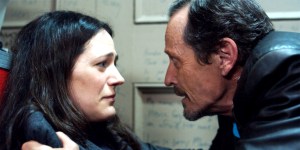
Image Credit: ©IFC Films/Courtesy Everett Collection In most zombie movies, it’s either a bite, a chemical reaction, or death itself that transforms people into blood-thirsty ghouls. But the disturbing Canadian indie “Pontypool” adds a new form of contagion to the genre: the English language. Stephen McHattie delivers a tour de force performance as a radio shock jock broadcasting from a small station in Pontypool, Ontario, who begins to hear reports about a rash of violent attacks committed by citizens muttering random words over and over again. It’s gradually revealed that certain phrases, when spoken aloud, can infect humans like a virus. Set almost entirely in the claustrophobic confines of a radio station, “Pontypool” is a low-budget marvel that grows creepier with every passing minute.
-
The Beyond (1981)
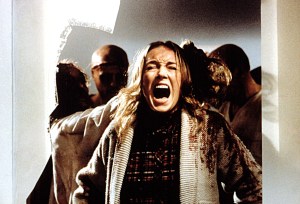
Image Credit: Aquarius Releasing/Courtesy Everett Collection Shambling zombies can be sidestepped without too much trouble, and running zombies can be left in the dust if you have access to a fast car. But metaphysical zombies are pretty much impossible to avoid, as the characters in Lucio Fulci’s “The Beyond” discover to their dismay. Structured like a steadily unfolding nightmare, “The Beyond” features rotting zombies that simply appear out of thin air. They lurch from the shadows like intrusive thoughts, gouge a few eyes out or tear some scalps off, and then vanish into the netherworld again, leaving wet piles of viscera behind. Which begs the question, how do you fight a zombie that isn’t even there?
-
Planet Terror (2007)
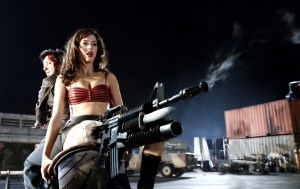
Image Credit: ©Weinstein Company/Courtesy Everett Coll / Everett Collection A loving homage to trashy Italian zombie films like Umberto Lenzi’s “Nightmare City” and Bruno Mattei’s “Hell of the Living Dead,” Robert Rodriguez’s “Planet Terror” is a postmodern action-horror hybrid that delivers laughs and jump scares in equal measure. Digitally aged to resemble a vintage ‘70s grindhouse movie, Rodriguez’s turbo-charged pastiche features an all-star cast shooting, hacking, bludgeoning, and burning their way through wave after wave of bio-infected zombies. In a film overflowing with WTF moments, none is cooler than the sight of Rose McGowan blasting gooey creatures with a machine gun strapped to her amputated leg.
-
Cemetery Man (1994)
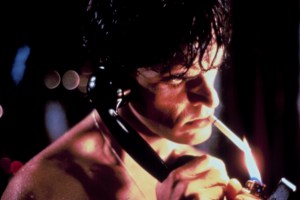
Image Credit: Courtesy Everett Collection Based on an Italian graphic novel, “Cemetery Man” stars English actor Rupert Everett as Francesco Dellamorte, a morose graveyard groundskeeper whose job regularly involves killing the newly-risen dead. When the love of his life is bitten by a zombie, Francesco’s sanity crumbles, and as fantasy and reality blur together, he takes his murderous frustrations out on the living rather than the dead. Directed with high style by Michele Soavi, the film’s moody production design, surreal story, and macabre sense of humor should appeal nicely to fans of Guillermo del Toro and Tim Burton.
-
The Living Dead at Manchester Morgue (1974)
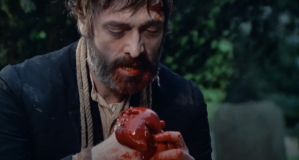
Image Credit: Courtesy of YouTube Part zombie movie, part eco-horror film, this grisly shocker about a high-tech agricultural device that eradicates insects but raises the dead broke new ground for its vivid depiction of onscreen gore. Released under several different titles – including “Let Sleeping Corpses Lie” and “Don’t Open the Window” – it was directed by Spanish filmmaker Jorge Grau and stars Ray Lovelock as a hip London antique dealer whose weekend in the country is spoiled when ravenous cadavers begin crawling from their graves. Gloomy, downbeat, and deeply cynical about human nature, “The Living Dead at Manchester Morgue” packs a nasty wallop.
-
The Plague of the Zombies (1966)
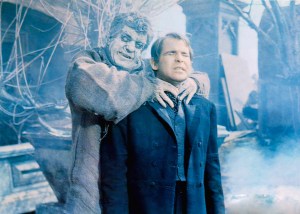
Image Credit: ©20thCentFox/Courtesy Everett Collection Often relegated to supporting roles in Z-grade movies like “Plan 9 from Outer Space,” zombies were little more than second-class monsters by the early 1960s. But British production company Hammer Films changed all that with its sumptuous horror pic “The Plague of the Zombies.” When townspeople in a Cornish village start dropping dead from a mysterious illness, an inquisitive medical professor suspects that voodoo rituals might be to blame. His investigation leads to a fiery confrontation between empirical science and the forces of black magic. Lurid and ghastly in all the right ways, the film was a well-reviewed rebound for Hammer after a string of contemporary thrillers failed to catch on with the public.
-
The Girl with All the Gifts (2016)
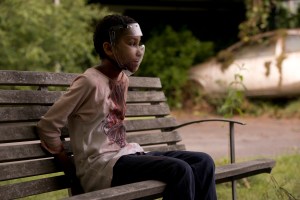
Image Credit: ©Saban Int’l/Courtesy Everett C Just when it seemed as though every possible zombie story had been told a dozen times or more, along came this poetic vision of a dystopian world where zombified children hold the key to humanity’s survival. Although “The Girl With All the Gifts” stars fine actors like Glenn Close and Gemma Arterton, it’s newcomer Sennia Nanua who leaves a lasting impression, playing a likable young girl named Melanie whose plexiglass face shield prevents her from devouring every living person she meets. Making its modest $5 million budget look like four times that amount on screen, director Colm McCarthy and production designer Kristian Milsted have fashioned a crumbling future that feels eerily authentic and strangely beautiful.
-
The Serpent and the Rainbow (1988)
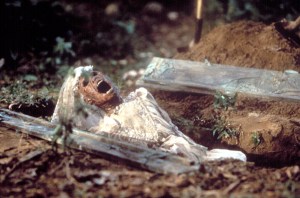
Image Credit: ©Universal/Courtesy Everett Collection Legendary director Wes Craven first dipped his toe in the zombie genre with the 1986 horror film “Deadly Friend,” about a teenage inventor who revives his dead girlfriend by inserting a microchip into her brain. But Craven’s biggest contribution to zombie cinema came two years later with his loose adaptation of a non-fiction book by ethnobotanist Wade Davis. Rather than tell yet another story about rampaging zombies looking for a juicy meal, “The Serpent and the Rainbow” examines the real-life hallucinogenic drugs that, when coupled with powerful cultural beliefs, may have led to the origin of the zombie phenomenon in Haiti.
-
Pet Sematary (1989)
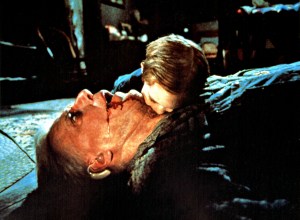
Image Credit: ©Paramount/Courtesy Everett Collection Director Mary Lambert’s memorably morbid adaptation of Stephen King’s bestseller demonstrates that you don’t need thousands of running zombies to terrify an audience. Sometimes one toddler zombie is all it takes to chill the blood. Filled with giggling corpses, haunted graveyards, reanimated cats, and some seriously unpleasant scalpel action, Lambert’s “Pet Sematary” earns extra points for the rocking Ramones song played over the end credits. Skip the misguided 2019 remake, however. It’s dead on arrival.
-
The Horde (2009)
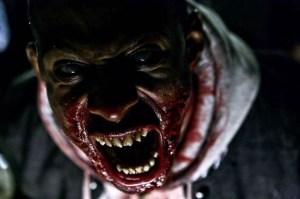
Image Credit: ©IFC Films/Courtesy Everett Collection In “The Horde,” a squad of vengeful cops and a crew of amoral gangsters battle for supremacy in a condemned apartment building in the heart of Paris, but are forced to form an uneasy alliance when a zombie apocalypse breaks out during their violent clash. An aggressively savage entry in a category of film that’s sometimes referred to as the New French Extremity, this no-nonsense zombie extravaganza provides a welcome shot of adrenalin to the all-too-familiar action-horror subgenre. If Walter Hill directed a European zombie movie, there’s a good chance it would look a lot like this transgressive gem.
-
One Cut of the Dead (2017)
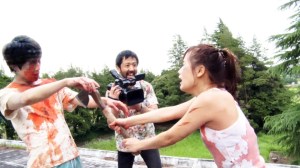
Image Credit: Shudder / courtesy Everett Collection Meta films don’t get much more self-referential than this exuberant Japanese horror comedy about a group of low-budget filmmakers who encounter some unanticipated challenges while making a zombie movie in an abandoned WWII facility. Divided into three distinctly different acts, it’s a film that needs to be watched in one sitting, from beginning to end, no matter how amateurish the opening third might seem. To say any more would risk spoiling the fun.
-
Dead Alive (1992)
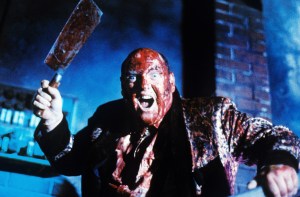
Image Credit: ©Trimark Pictures/Courtesy Everett Collection
Long before he unleashed millions of orcs on Middle Earth, Peter Jackson set hundreds of zombies loose on a New Zealand suburb in “Dead Alive,” a Monty Python-esque horror comedy that just might be the gnarliest film on this list. If lingering close-ups of leaking pustules and hemorrhaging wounds aren’t your cup of tea, you might want to keep a barf bag handy when watching this outrageous exercise in gross-out humor. Ideal entertainment for fans of Sam Raimi’s “Evil Dead” series, “Dead Alive” proves conclusively that a lawnmower in the right hands can defeat any amount of zombies thrown at it. -
World War Z (2013)
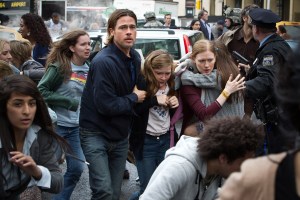
Image Credit: ©Paramount/Courtesy Everett Collection
Adapting Max Brooks’ bestselling novel for the big screen was reportedly a difficult experience for all involved, with numerous delays, budget battles, creative problems, and reshoots plaguing the production. And yet the finished film turned out to be an intensely compelling summer blockbuster, muscularly directed by Marc Forster and grounded by a genuine movie star performance by Brad Pitt. Combining military action, globetrotting intrigue, and zombie mayhem more effectively than any installment in the “Resident Evil” film series, “World War Z” occasionally feels like Tom Clancy meets the living dead, and that’s meant as a compliment.

